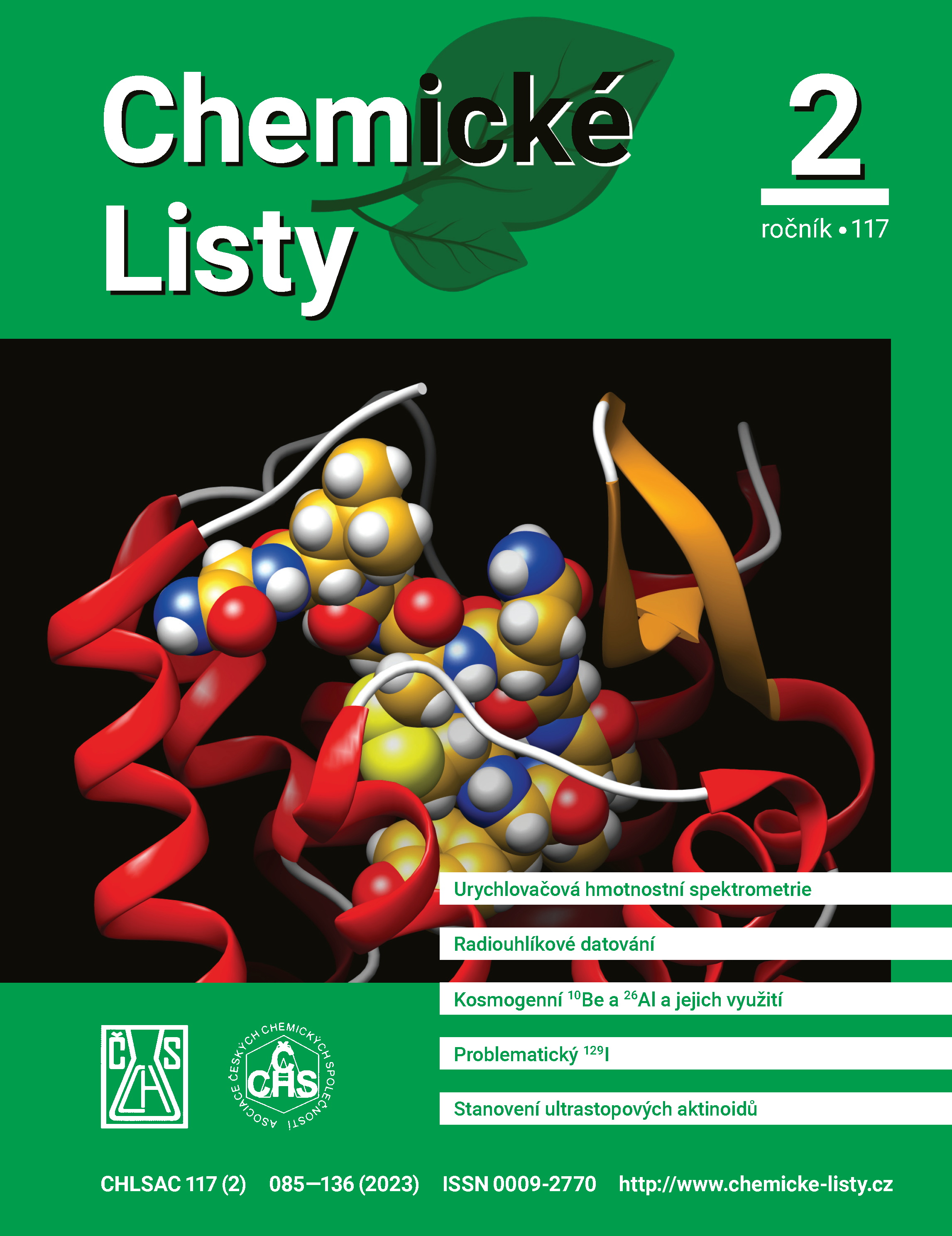Determination of Plutonium and Other Actinides by Accelerator Mass Spectrometry
DOI:
https://doi.org/10.54779/chl20230128Keywords:
plutonium, accelerator mass spectrometry, actinidesAbstract
Accelerator mass spectrometry (AMS) is a very sensitive method for the determination of ultra-trace concentrations of long-lived radionuclides of actinides, such as uranium, plutonium, neptunium, or americium, mostly in environmental samples. This article focuses mainly on the determination of plutonium isotopes occurring in nature due to human nuclear activity, mainly 239Pu and 240Pu. The determination of the 239/240Pu ratio enables one to identify the origin of plutonium emission in the environment, namely, whether it originates from global fallout or releases from nuclear facilities.
Actinides determination plays also an important role in environmental studies, where the measurement of individual radionuclides, such as 236U, 237Np, 239Pu, 240Pu and 241Am, can monitor the environmental processes, especially migration, sedimentation or deep ocean currents. The overall sample preparation procedure for AMS includes evaporation and pre-concentration of the sample to reduce its volume or sample decomposition. After that, to eliminate isobaric interferences, it is necessary to separate the actinides from other elements and, in most cases, also from each other. This paper describes procedures of the separation of actinides from various environmental samples, as well as the preparation of the oxide and fluoride target materials which is crucial for the measurement in terms of the isobaric interferences suppression, material quantity and the detection sensitivity.





